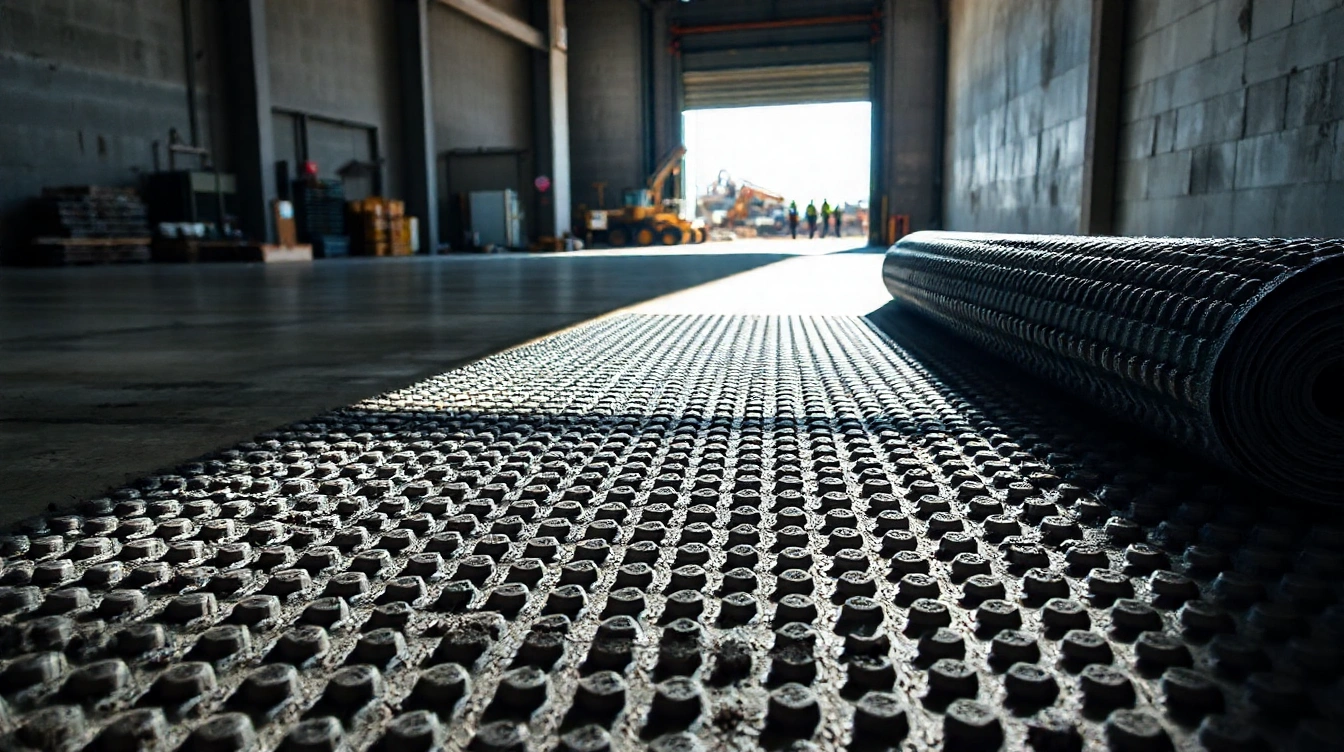Choosing the right bog mats can make or break construction and engineering projects across the UK. These mats provide vital ground protection, ensuring equipment stability and site safety on soft or uneven terrain. Understanding the differences in materials, load capacities, and compliance requirements helps professionals select solutions tailored to demanding UK conditions. This guide offers a clear comparison of top-rated bog mats, highlighting practical insights for efficient, sustainable site management.
Top-Rated Bog Mats for Construction and Engineering Use in the UK
When selecting the best bog mats in the UK for construction and engineering projects, durability and load-bearing capacity are paramount. Leading brands specialize in mats that combine robust material construction with advanced ground protection, ensuring stability on soft or uneven terrain. These top-rated construction bog mats are designed to minimize environmental impact while supporting heavy machinery effectively.
In the same genre : Top uk bog mats for construction and engineering projects
Among the highest regarded engineering mat recommendations are those constructed from recycled plastics with reinforced ribbing. This design enhances strength and extends lifespan, making them suitable for repeated heavy-duty use. Additionally, their textured surfaces prevent slippage, which is vital in dynamic work environments where safety is a priority. Users often select mats based on weight ratings that align with their specific machinery, ensuring optimum performance without ground subsidence.
Comparing performance metrics, the best bog mats UK offerings excel in resistance to weather-related degradation and chemical exposure, which is critical for outdoor projects. They also maintain rigidity under load, preventing deformation even under prolonged stress, ultimately safeguarding both equipment and terrain. For those seeking reliable solutions, Birketts Bogmats provide a comprehensive range of products tailored to meet stringent construction and engineering requirements while offering environmental protection.
Also to discover : Revitalizing UK Businesses: The Game-Changing Impact of Remote Work on Enterprise Dynamics
Comparing Materials: Hardwood vs. Plastic Bog Mats
Understanding the strengths and weaknesses of different mat materials
When selecting the right bog mat material, it’s essential to weigh the advantages and drawbacks of both hardwood bog mats and plastic bog mats. Hardwood bog mats have been a traditional choice on UK construction and engineering sites due to their natural robustness and ability to support heavy equipment. These mats offer excellent load distribution and typically provide a stable, non-slip surface. However, hardwood bog mats can be susceptible to water absorption, potential warping, and may require more maintenance over time compared to plastic alternatives.
Plastic bog mats, often made from rigid composites, present a modern alternative with benefits such as resistance to moisture, rot, and chemical exposure. Their lightweight nature allows for easier transportation and quicker installation on site. Despite these advantages, plastic bog mats may sometimes lack the same load-bearing capacity or natural grip as hardwood mats and can be less environmentally friendly depending on the material composition.
Choosing between hardwood bog mats and plastic bog mats depends largely on site-specific factors including soil conditions, load requirements, weather exposure, and sustainability goals. For example, hardwood bog mats are often preferred in projects prioritizing durability and natural grip on softer ground, while plastic bog mats excel in wet or corrosive environments where maintenance reduction is key.
Assessing Load Capacity, Durability, and Ground Conditions
Understanding heavy-duty bog mats begins with evaluating their high load capacity. Load ratings indicate the maximum weight a bog mat can safely support, which is critical in construction and engineering projects where heavy machinery must operate without sinking or causing ground damage. Selecting mats with appropriate load ratings ensures equipment mobility and site stability, preventing costly delays.
The variety of UK ground conditions from soft, waterlogged soils to uneven terrain requires careful matching of bog mats to site specifics. Mats designed for wet or soft ground typically feature reinforced structures and materials that distribute weight effectively. This prevents the mat from sinking and reduces environmental impact. For uneven or sensitive ground, mats that offer flexibility and high friction surfaces help maintain stability and safety.
Durability is another key factor. Heavy-duty bog mats endure significant stress through repeated use. Evaluating their expected lifespan and warranty coverage aids in choosing mats that deliver long-term performance. Robust construction materials, such as UV-resistant polymers and reinforced composites, extend mat life under harsh weather and heavy loads. Investing in durable mats reduces replacement frequency and enhances project efficiency.
For tailored recommendations on selecting high-performing bog mats suited to challenging UK ground conditions, consider resources like Birketts Bogmats. These provide product comparisons emphasizing load capacity and durability, helping professionals make informed decisions.
Pricing, Delivery, and Sourcing Bog Mats in the UK
When considering bog mat prices UK, understanding the range between purchasing and rental options is essential. Bog mats can vary widely in cost depending on material quality, size, and supplier. Buying tends to be more expensive upfront but cost-effective for long-term projects, whereas hiring offers flexibility and reduces immediate expenditure. Rental prices typically depend on the duration and quantity required, with suppliers often offering competitive daily, weekly, or monthly rates.
Finding reliable bog mat suppliers is crucial for ensuring quality and service. Many suppliers in the UK offer both new and used bog mats, with options catering to construction, engineering, and environmental projects. Reputable suppliers provide detailed specifications, certifications, and support for selecting mats suitable for different ground conditions. Some also specialize in custom sizes or reinforced mats for heavier-duty applications. To explore varied options, users may find sites such as Birketts Bogmats helpful to connect with top UK bog mat providers.
On the topic of delivery options UK, most reputable suppliers ensure swift shipping within defined service areas. Standard delivery timelines usually range from 2 to 7 days, depending on location and stock availability. For urgent requirements, express or same-week delivery may be offered at an additional cost. Many suppliers also provide on-site installation services, assisting with placement, secure locking, and eventual retrieval of bog mats. This turnkey approach reduces logistical challenges and contributes to seamless project execution across various UK regions.
Compliance: UK Standards, Regulations, and Sustainability
Ensuring compliance with UK bog mat regulations is crucial for construction projects to meet legal and environmental expectations. The primary standards governing bog mats in the UK are aligned with both national and European directives focused on health, safety, and environmental protection. These include regulations that ensure the mats provide adequate load distribution to prevent ground damage and meet traction and slip resistance requirements critical for worker safety.
Health and safety standards mandate that bog mats must be inspected regularly to avoid risks related to structural failure. Adhering to these standards minimizes accidents and ensures that mats support heavy machinery without collapsing or shifting. Environmental impact regulations, such as waste management policies and substance restrictions, emphasize the use of mats that do not contaminate soil or water sources during or after deployment.
Sustainability considerations are gaining prominence within UK bog mat regulations. Recycled bog mats, made from repurposed timber or composite materials, offer a practical solution to reduce resource depletion. Ethically sourced mats from managed forests or manufacturers committed to sustainable practices contribute positively to project credentials and environmental stewardship. For projects seeking the best environmentally responsible solutions, exploring suppliers of sustainable bog mats can lead to compliance alongside effective ground protection.
Companies are encouraged to evaluate their bog mat suppliers’ certifications and environmental policies to ensure full compliance. For detailed information on sourcing compliant and sustainable bog mats, Birketts Bogmats provide valuable resources aligned with UK standards and sustainability goals.
Pros and Cons of Leading Bog Mats for UK Construction
Exploring strengths and limitations to guide your choice
When evaluating bog mats pros and cons for UK construction projects, several factors come into play. The key strengths of top bog mats include their durability and load-bearing capacity, essential for supporting heavy machinery on soft ground. Many of the best mats reviewed demonstrate excellent resistance to moisture and deformation, which is crucial given the UK’s often wet and uneven site conditions. For example, popular mats frequently feature treated timber or composite materials that resist water damage better than untreated alternatives.
However, limitations of some leading bog mats involve their weight and handling complexity. Heavier mats require specialized lifting equipment, impacting logistics and increasing costs, particularly for smaller-scale projects. Site managers have reported that while robust mats improve ground stability, they can slow setup time and reduce maneuverability in tight areas. Budget constraints may also restrict access to premium mats with advanced features, pushing some toward more economical but less durable options.
Customer feedback highlights these trade-offs clearly: mats that offer superior strength typically come at a higher price and demand more careful planning for installation. Conversely, lighter, more affordable mats might suit short-term or less demanding projects but could underperform on prolonged or challenging terrain.
When considering the best mats review data, UK site considerations such as soil type, project duration, and expected traffic loads should directly influence mat selection. For instance, bog mats made from engineered composites are praised for longevity but may not be necessary for low-impact jobs where timber mats suffice.
Choosing the right bog mat hinges on balancing these pros and cons against your project’s scale, budget, and logistical capabilities. Exploring options like those from Birketts Bogmats can provide access to a range of mat types tailored to diverse site needs, helping you make an informed, practical decision.











